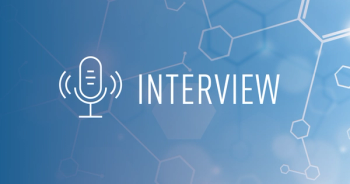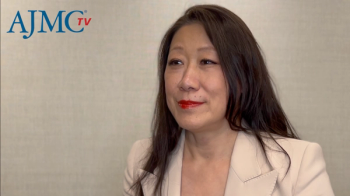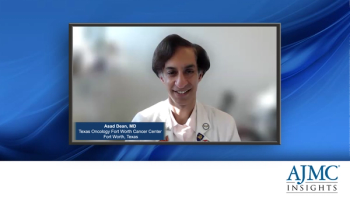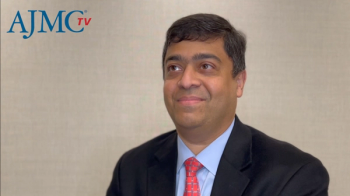
- October 2015
- Volume 21
- Issue SP14
Treatment of Acute Lymphoblastic Leukemia in Adolescents and Young Adults
Adolescent and young adults (AYA) constitute a distinct population amongst patients with cancer. Historically, AYA patients with ALL treated along pediatric-inspired protocols had better outcomes compared to those treated on standard "adult type" regimens.
Adolescents and Young Adults Constitutes a Distinct Group in Oncology
Adolescents and young adults (AYAs) with cancer have been recognized as a distinct subgroup of patients in the field of oncology since 2006. From the onset of symptoms until the completion of active therapy and beyond, the particular challenges this group faces have been overlooked and underestimated.
In 2006, it was noted that improvements in cancer outcomes observed for the US population as a whole had not been experienced by AYA patients.1 The reduction in the cancer mortality rate in this group has lagged behind the reduction noted in children and older adults. As a result, although AYAs with cancer had a relatively better prognosis a quarter of a century ago, compared with children with cancer, that advantage has now been lost.
AYA patients comprise a complex and diverse group with various levels of developmental maturity—and, consequently, unique and largely unmet clinical and psychosocial needs.2-4 Each year, nearly 70,000 individuals aged 15 to 40 years are diagnosed with cancer in the United States. Although overall cancer survival rates among pediatric and older adult patients have increased in recent decades, survival of AYA patients with cancer has seen little improvement since 1975 when collected data became adequate to evaluate this issue. In 2006, the National Cancer Institute and the Lance Armstrong Foundation (now the Livestrong Foundation) conducted a program review group of the AYA problem. Recommendations covered awareness, prevention/cancer control/epidemiology/risk, biology, access, health insurance, clinical care models, clinical trials/research, special populations, psychosocial and behavioral factors, health-related quality of life, and long-term effects.2-4
Acute Lymphoblastic Leukemia in AYA
Acute lymphoblastic leukemia (ALL) is one of the leading causes of cancer-related deaths among AYAs. Overall survival and disease-specific survival of ALL are clinically significantly poorer in AYA patients than in children aged 1 to 10 years. It is not known whether this difference in outcomes is due to distinct genetic and biological features, different therapeutic regimens and intensities, differences in compliance to therapy, or other social and behavioral issues. AYAs (16 to 21 years of age) with ALL have worse outcomes (7-year event-free survival [EFS] = 34%) than children between 1 and 10 years of age for whom the cure rate now approaches 80% to 85%.
Pediatric-Inspired Versus Standard “Adult” ALL Protocols
Table 1
Several retrospective studies that focused on younger AYA patients (15 to 21 years old) reported that AYAs treated with standard adult protocols (SAPs) for ALL had unfavorable outcomes compared with similarly aged patients treated with pediatric-inspired protocols (PIPs). A large retrospective study reported on a comparison of presenting features, planned treatment, complete remission (CR) rate, and outcome of 321 AYAs aged 16 to 20 years with newly diagnosed ALL who were treated in consecutive trials in either the Children's Cancer Group (CCG) or the Cancer and Leukemia Group B (CALGB). The CR rates were identical: 90% for CALGB and CCG AYAs. However, CCG AYAs had a 63% EFS and 67% overall survival (OS) at 7 years in contrast to the CALGB AYAs, among whom the 7-year EFS was 34% (P <.001; relative hazard rate [RHR] = 2.2) and OS was 46% (P <.001; RHR = 1.9). Comparison of the regimens showed that AYA patients treated on the CCG regimen received earlier and more intensive central nervous system prophylaxis and higher cumulative doses of non-myelosuppressive agents. There were no differences in outcomes of those who reached maintenance therapy on time compared with those who were delayed.5 Similar results have been observed in retrospective analyses of AYA patients in France,6 the United Kingdom,7 the Netherlands,8 and Japan9 ().
Table 1
The most widely used regimen in adults with ALL is hyper-CVAD, consisting of hyperfractionated cyclophosphamide, vincristine, doxorubicin, and dexamethasone, developed at MD Anderson Cancer Center in Houston.10,11 A prospective cohort of AYA patients treated along the guidelines of a pediatric regimen, the augmented Berlin-Frankfurt-Munster (ABFM), was compared with a retrospective cohort of similar population treated with the hyper-CVAD regimen. The 3-year complete remission duration (CRD) and OS rates were similar between the groups (). Severe regimen toxicities included transient hepatotoxicity in 35% to 39% of patients and pancreatitis in 11% of patients that were closely related to the use of asparaginase in the regimen. Other toxicities included osteonecrosis in 11% of patients and thrombosis in 22% of patients, which were similar to those reported with the hyper-CVAD regimen.12
Similar outcomes comparing SAP and PIP ALL regimens were reported in a prospective study from Finland. No significant differences were observed between AYAs treated on a PIP regimen and those treated on a SAP.13 Although reasons for the differences noted in a majority of the reports5-8,14are unclear, possible hypothetical explanations include potential clinical and biological differences among AYAs compared with adults, differences in protocol design and dose intensity, and potential variations in the degree of adherence to the treatment regimens administered by medical oncologists compared with pediatric oncologists.
Table 2
To address many of these unanswered questions, the adult cooperative groups have performed a large prospective trial that focuses specifically on AYAs (Intergroup trial C10403).15 Newly diagnosed ALL patients aged 16 to 40 years were eligible for treatment that parallels the current Children Oncology Group (COG) study (AALL0232)10 consisting of 4 intensive courses: remission induction, remission consolidation, interim maintenance, and delayed intensification, followed by prolonged maintenance therapy (). The results show that of the 318 patients enrolled on the trial, 22 withdrew prior to therapy. The median age at diagnosis was 24 years (range: 17 to 39 years). Patients were stratified into 3 age groups: 25% were 17 to 20 years, 53% were 21 to 29 years, and 22% were 30 to 39 years. The majority had B-ALL (76%) and were male (61%).
Overall, treatment toxicities were similar to those reported in the standard arm of COG AALL0232, with an increased thrombosis and early hyperbilirubinemia observed in C10403 patients. The median EFS overall is 59.4 months (95% confidence interval (CI), 0.384 to not releasable) and the 2-year EFS rate overall was 66% (95% CI, 0.60-0.72), with similar 2-year EFS rates for B and T-ALL patients (65% and 68%, respectively). The 2-year OS rate was 78% (95% CI, 0.72-0.83), which is similar for B-ALL (78%; 95% CI, 0.72-0.84) and T-ALL (80%; 95% CI, 0.70-0.91). These results allow rejection of the null hypothesis of this phase 2 trial that the true median EFS is, at most, 32 months.
In multivariable analysis of presenting clinical features, being older than 20 years and having an initial white blood cell count 30,000/mcl were significantly associated with worse EFS and OS. Presence of minimal residual disease (MRD) at day 28 following initiation of induction therapy and presence of a Ph-like gene expression signature were significantly associated with both worse EFS and OS. Absence of detectable MRD noted in 22 of 58 (38%) evaluable patients at day 28 of induction was associated with 100% EFS (P = .0006). The Ph-like signature was detected in 28% of patients tested on C10403, and the 2-year EFS for these patients was 52% compared with 81% for those without Ph-like disease (P = .04). This large trial, employing an intensive pediatric regimen in AYA patients with ALL, demonstrates a significant improvement (compared with historical controls) in EFS and OS, and validates the approach of using pediatric regimens for treatment of AYAs with ALL by adult hematologists.
Table 2
A majority of recent studies demonstrate a survival benefit using pediatric regimens for AYA; however, several recently published comparison studies of SAP versus PIP, such as the ABFM,16 found equivalent EFS (∼70%). Conceptually, the major difference between PIP and SAP regimens for ALL is in their toxicity profile: whereas PIPs are based on multiple phases and agents (including asparaginase) delivered over the long term, SAP regimens for ALL are focused on aggressive cytoreduction mimicking the approach to acute myelogenous leukemia, including reliance on allogeneic and autologous stem cell transplantation in first CR, fewer consolidations, shorter maintenance durations, and less intrathecal chemotherapy ().
The Role of Hematopoietic Cell Transplantation in Treatment of AYAs with ALL
One of the guiding principles of SAP ALL regimens in AYAs is the idea of proceeding with allogeneic hematopoietic cell transplantation (HCT) as soon as the patient achieves first CR. This is based on a large prospective randomized international collaborative study (MRC UKALL XII/E2993) that documented a significant increase in OS for allogeneic transplant in CR1 compared with a standard ALL regimen (63% vs 52%).17 On the other hand, the trend in consecutive pediatric studies showed improved outcomes in patients with very high-risk ALL treated with pediatric chemotherapy regimen compared with allogeneic HCT.18 Similarly, a significant benefit (hazard ratio 3.1; P <.0001) in both disease-free survival (DFS) and OS was found in a recent International Bone Marrow Transplant Registry study of adults aged 18 to 50 years for patients receiving an intensive pediatric regimen compared with allogeneic transplant in CR1 due to transplant-related mortality.19Thus, one of the major justifications to use an SAP ALL regimen is rendered at least doubtful.
Approach to Very-High-Risk ALL in AYAs
Many of the studies reporting on ALL in AYAs have demonstrated that the outcome was closely related to a very-high-risk (VHR) population, including persistent presence of MRD at the end of the induction phase of therapy and the presence of cytogenetic and genomic markers of poor outcome. Presence of genomic markers such as t(9;22)(q34;q11)—the Philadelphia chromosome (Ph+)—results in the expression of the BCR-ABL1 fusion gene or the BCR-ABL1—like (or Ph-like) signature that is characterized by a high frequency of alterations of IKZF1, a gene that encodes the lymphoid transcription factor IKAROS and carries a gene expression profile similar to that seen in BCR-ABL1+ ALL, but lacks the BCR-ABL1 fusion protein expressed from the t(9;22)(q34.1;q11.2). Both conditions are more commonly found in AYAs; Ph+ occurs in 25% to 30% of older adults, although it is less common in younger adults,20 and the BCR-ABL—like signature increases with age and is frequent in AYAs (up to 27% in patients aged 20 to 30 years).20-22
The current approach to VHR ALL in AYA is to proceed with HCT after induction of remission. Recent data suggest a paradigm shift when it comes to ALL Ph+. Whereas in the past induction therapy following the diagnosis of ALL was followed by HCT, the addition of tyrosine kinase inhibitors (TKIs) to frontline therapy has resulted in prolonged DFS even in patients who did not undergo allogeneic HCT in CR1.23 The ability of TKIs to achieve major or complete molecular remissions led to the question of whether HCT is needed in all patients. Schultz and colleagues, on behalf of the COG, reported that continuous imatinib exposure improved outcome in a cohort of Ph+ ALL patients with a 3-year EFS of 80% ±11% (95% CI, 0.64-0.90), more than twice that of historical controls (35%±4%; P <.0001).
The 3-year EFS was similar for patients treated with chemotherapy plus imatinib (88% ±11%; 95% CI, 0.66-0.96) and patients who were given sibling-donor HCT (57% ±22%; 95% CI, 0.304-0.761). There were no significant toxicities associated with adding imatinib to intensive chemotherapy.24Although this study provides a strong argument that TKI plus standard chemotherapy improved 3-year EFS in children and adolescents with Ph+ ALL, with no appreciable increase in toxicity,24further studies are needed to show that TKIs and chemotherapy can replace HCT in AYA with ALL Ph+.
Current Standard of Care
The current standard of care has been recently reviewed by Curran and Stock.25Their recommendations are based on multiple publications that were summarized in a meta-analysis by Ram and colleagues.14 In this meta-analysis, 11 studies with a total of 2489 patients were reviewed, ranging from 40 to 926 patients per study. The duration of follow-up ranged from 35 to 89 months. None of the studies was a randomized controlled trial.
The analysis showed that AYA patients given pediatric-inspired regimens had a statistically significant reduction in all-cause mortality at the end of the study period (RR 0.59; 95% CI, 0.52-0.66) and at the 3-year mark (RR 0.58; 95% CI, 0.51-0.67) compared with patients given the conventional adult regimens. The absolute risk reduction for all-cause mortality at 3 years was 0.20 and the number needed to treat to prevent 1 death with pediatric-inspired regimens was 5 (95% CI, 4-7). CR rates following induction chemotherapy were superior in the pediatric-inspired regimens arm (RR 1.05; 95% CI, 1.01-1.10) at 3 years. Patients in this study arm had higher EFS rates compared with the conventional adult regimes (RR 1.66; 95% CI, 1.39-1.99).
EBO
The most important finding was a statistically significant reduction in RR in the pediatric regimens compared with the conventional adult regimes (RR 0.51; 95% CI, 0.39-0.66), without a significant difference in the rate of nonrelapse mortality between the 2 groups (RR 0.53; 95% CI, 0.19-1.48). The balance of the data supports, therefore, that any AYA patient diagnosed with ALL should be considered for a pediatric-inspired protocol, such as the ABFM series of protocols, unless enrolled on a clinical trial investigating the findings reported by several groups,12,13 indicating no significant differences between AYAs treated on PIP or standard “adult” ones.
Joseph Rosenthal, MD, is professor and chair in pediatrics and director of pediatric hematology/oncology, Department of Pediatrics, City of Hope National Medical Center.
Corresponding Author
Joseph Rosenthal, MD
Pediatric Hematology/Oncology
City of Hope
1500 E. Duarte Rd.
Duarte, California 91010
E-mail: JRosenthal@coh.org
Funding source: Supported in part by the Barron Hilton Endowed Pediatric Chair Fund.
References
- Zebrack B, Bleyer A, Albritton K, Medearis S, Tang J. Assessing the health care needs of adolescent and young adult cancer patients and survivors. Cancer. 2006;107(12):2915-2923.
- Bleyer A. Adolescent and young adult (AYA) oncology: the first A. Pediatr Hematol Oncol. 2007;24(5):325-336.
- Tricoli JV, Seibel NL, Blair DG, Albritton K, Hayes-Lattin B. Unique characteristics of adolescent and young adult acute lymphoblastic leukemia, breast cancer, and colon cancer. J Natl Cancer Inst. 2011;103(8):628-635.
- Adolescent and Young Adult Oncology Progress Review Group. Closing the gap: research and care imperatives for adolescents and young adults with cancer. NIH Publication No 06-6067. National Cancer Institute website. www.cancer.gov/types/aya/research/ayao-august-2006.pdf. Published 2006. Accessed September 14, 2015.
- Stock W, La M, Sanford B, et al; Children's Cancer Group; Cancer and Leukemia Group B studies. What determines the outcomes for adolescents and young adults with acute lymphoblastic leukemia treated on cooperative group protocols? A comparison of Children's Cancer Group and Cancer and Leukemia Group B studies. Blood. 2008;112(5):1646-1654.
- Boissel N, Auclerc MF, Lheritier V, et al. Should adolescents with acute lymphoblastic leukemia be treated as old children or young adults? Comparison of the French FRALLE-93 and LALA-94 trials. J Clin Oncol. 2003;21(5):774-780.
- Ramanujachar R, Richards S, Hann I, et al. Adolescents with acute lymphoblastic leukaemia: outcome on UK national paediatric (ALL97) and adult (UKALLXII/E2993) trials. Pediatr Blood Cancer. 2007;48(3):254-261.
- de Bont JM, Holt B, Dekker AW, et al. Significant difference in outcome for adolescents with acute lymphoblastic leukemia treated on pediatric vs adult protocols in the Netherlands. Leukemia. 2004;18(12):2032-2035.
- Hayakawa F, Sakura T, Yujiri T, et al; Japan Adult Leukemia Study Group (JALSG). Markedly improved outcomes and acceptable toxicity in adolescents and young adults with acute lymphoblastic leukemia following treatment with a pediatric protocol: a phase II study by the Japan Adult Leukemia Study Group. Blood Cancer J. 2014;4:e252.
- Kantarjian HM, O'Brien S, Smith TL, et al. Results of treatment with hyper-CVAD, a dose-intensive regimen, in adult acute lymphocytic leukemia. J Clin Oncol. 2000;18(3):547-561.
- Kantarjian H, Thomas D, O'Brien S, et al. Long-term follow-up results of hyperfractionated cyclophosphamide, vincristine, doxorubicin, and dexamethasone (Hyper-CVAD), a dose-intensive regimen, in adult acute lymphocytic leukemia. Cancer. 2004;101(12):2788-2801.
- Rytting ME, Thomas DA, O'Brien SM, et al. Augmented Berlin-Frankfurt-Munster therapy in adolescents and young adults (AYAs) with acute lymphoblastic leukemia (ALL). Cancer. 2014;120(23):3660-3668.
- Usvasalo A, Raty R, Knuutila S, et al. Acute lymphoblastic leukemia in adolescents and young adults in Finland. Haematologica. 2008;93(8):1161-1168.
- Ram R, Wolach O, Vidal L, et al. Adolescents and young adults with acute lymphoblastic leukemia have a better outcome when treated with pediatric-inspired regimens: systematic review and meta-analysis. Am J Hematol. 2012;87(5):472-478.
- Stock W, Luger SM, Advani AS, et al. Favorable outcomes for older adolescents and young adults (AYA) with acute lymphoblastic leukemia (ALL): early results of U.S. Intergroup Trial C10403. Presented at: American Society of Hematology, 56th Annual Meeting; December 6-9, 2014; San Francisco, CA. https://ash.confex.com/ash/2014/webprogram/Paper70905.html. Accessed September 14, 2015.
- Bowman WP, Larsen EL, Devidas M, et al. Augmented therapy improves outcome for pediatric high risk acute lymphocytic leukemia: results of Children's Oncology Group trial P9906. Pediatr Blood Cancer. 2011;57(4):569-577.
- Goldstone AH, Richards SM, Lazarus HM, et al. In adults with standard-risk acute lymphoblastic leukemia, the greatest benefit is achieved from a matched sibling allogeneic transplantation in first complete remission, and an autologous transplantation is less effective than conventional consolidation/maintenance chemotherapy in all patients: final results of the International ALL Trial (MRC UKALL XII/ECOG E2993). Blood. 2008;111(4):1827-1833.
- Schrappe M, Hunger SP, Pui CH, et al. Outcomes after induction failure in childhood acute lymphoblastic leukemia. N Engl J Med. 2012;366(15):1371-1381.
- DeAngelo DJ, Stevenson KE, Dahlberg SE, et al. Long-term outcome of a pediatric-inspired regimen used for adults aged 18-50 years with newly diagnosed acute lymphoblastic leukemia. Leukemia. 2015;29(3):526-534.
- Moorman AV, Chilton L, Wilkinson J, Ensor HM, Bown N, Proctor SJ. A population-based cytogenetic study of adults with acute lymphoblastic leukemia. Blood. 2010;115(2):206-214.
- Mullighan CG, Su X, Zhang J, et al. Deletion of IKZF1 and prognosis in acute lymphoblastic leukemia. N Engl J Med. 2009;360(5):470-480.
- Roberts KG, Pei D, Campana D, et al. Outcomes of children with BCR-ABL1-like acute lymphoblastic leukemia treated with risk-directed therapy based on the levels of minimal residual disease. J Clin Oncol. 2014;32(27):3012-3020.
- Foa R, Vitale A, Vignetti M, et al. Dasatinib as first-line treatment for adult patients with Philadelphia chromosome-positive acute lymphoblastic leukemia. Blood. 2011;118(25):6521-6528.
- Schultz KR, Bowman WP, Aledo A, et al. Improved early event-free survival with imatinib in Philadelphia chromosome-positive acute lymphoblastic leukemia: a children's oncology group study. J Clin Oncol. 2009;27(31):5175-5181.
- Curran E, Stock W. How I treat acute lymphoblastic leukemia in older adolescents and young adults. Blood. 2015;125(24):3702-3710.
Articles in this issue
almost 10 years ago
Financial Toxicity and the Young Adult Cancer Survivoralmost 10 years ago
FDA Updates in Oncologyalmost 10 years ago
Using a Gene Expression Assay to Predict Response to NAC in Breast Canceralmost 10 years ago
Managed Care Updates in Oncologyalmost 10 years ago
The Need to Raise Awareness for Young Adult Cancer Carealmost 10 years ago
Sticking Up for the 340B Programalmost 10 years ago
Bridging the Care Gap Between Pediatric and Young Adult Canceralmost 10 years ago
Coordinated, Personalized Care to Improve AYA OutcomesNewsletter
Stay ahead of policy, cost, and value—subscribe to AJMC for expert insights at the intersection of clinical care and health economics.

















































